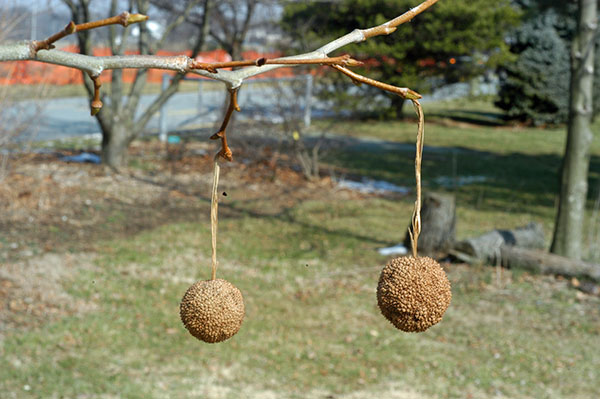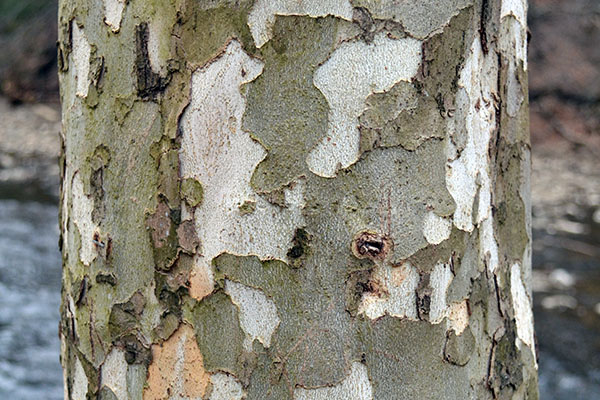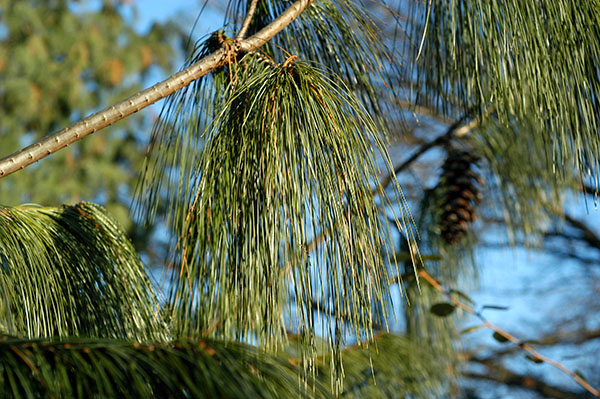Platanus occidentalis
Sycamore, Buttonwood, American Planetree, Buttonball-tree
Found throughout the Eastern US; Main to Florida west to Minnesota
Platanus occidentalis is native to the eastern United States. It is a tree often with a large, massive trunk and a wide spreading, open crown of massive, crooked branches.
Grows best in well-drained, moist soils, usually found growing in bottomlands or along riverbanks. Prefers full sun.
Best in its native habitat, but popular as a street tree. It is generally too large for this purpose and results in a great deal of unnecessary maintenence. This is an excellent specimen, greatly admired for how large and spreading it is; also the exfoliating bark is a prized characteristic. Used in residential areas and grows well in wet soils. However, this can be a nuisance because of the constant tree litter.
Flat medium to dark green in summer. Alternate, simple, truncate or cordate, serrated or toothed along the ridge, often resembles a Maple tree leaf.
Buds are acute and pointed, the leaf scars encircle the bud.
Exfoliating; older trunks are white with mottled brown and black flakes falling off.
Similar to P. ×acerifolia.
Hanging balls that are somewhat spiky, but not as spiky as American Sweetgum.
No pregermination treament is necessary, although 60 days at 41 degrees Fahrenheit has proven beneficial.
'Howard' - New growth is a bright yellow that fades with the heat of summer.







